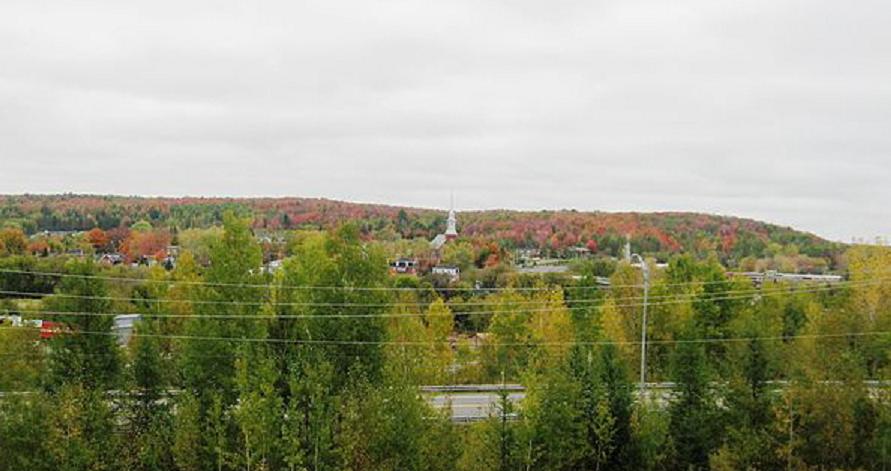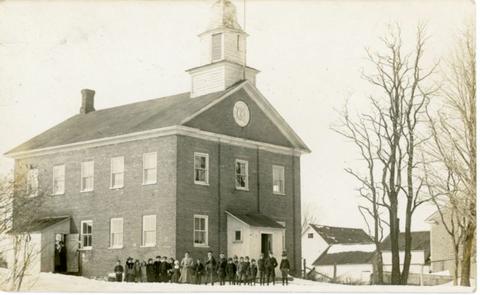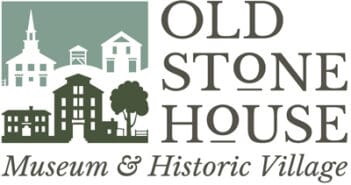
Anthony Di Mascio teaches at Bishop’s University in Montreal, QC.
For our third Twilight Tidbit, we draw your attention to Alexander Lucius Twilight’s time in Canada where he also had a profound educational influence. The following is excerpted from Anthony Di Mascio’s article in Historical Studies in Education entitled “The Emergence of Academies in the Eastern Townships of Lower Canada and the Invisibility of the Canada-U.S. Border.” Find a full copy of this article here. Stay tuned next week for our next Tidbit from the life and times of Mr. Twilight.
One significant American teacher who influenced education in the Eastern Townships was Alexander Twilight. Though little has been written about him in either Canadian or American educational historiography, his biography in many ways embodies the very essence of American influences on education in the Eastern Townships. It also helps us better understand the ease with which inhabitants of the Eastern Townships and New England traversed the border, and gives meaning to the ways in which the people of this borderland lived their lives as a shared experience within a single community.

Richmond, Quebec in Canada today. This was formerly Shipton Canada East where Alexander Lucius Twilight lived for a time.
Twilight was born in Corinth, Vermont on 23 September 1795, the third of six children in a mixed race family. He was the first African-American person known to have earned a degree in the United States, at Middlebury College in 1823. He spent most of his early adult life teaching in various schools and academies throughout Vermont, New Hampshire, and New York State. He also studied for the ministry with the Congregational Church and served as a minister in many of the communities where he took up teaching positions. In 1847, he moved to Shipton, Canada East (now Richmond, Quebec) where he taught and preached. At Shipton he established a small private school, referred to by locals as “Twilight’s Academy.” He later moved to Hatley, Canada East, where he took a position at Charleston Academy. Twilight left the Eastern Townships in 1851 and returned to his home state of Vermont, where he continued to teach along the Canadian border in Orleans, and serve as a minister, until his death in 1857. The presence of an African-American, and Congregationalist minister, teaching the children of a British colony in the Eastern Townships ought to help us better imagine the complex ways in which Canadians and Americans in this region shared a common educational experience and a common history. Considering that their neighbours in other parts of English Canada, notably Upper Canada, were struggling with the concept and creation of separate schools (both by race and religion) during this time, it is striking that the children of the Eastern Townships, like their American neighbours in Vermont, were being taught by the very people those Upper Canadian schools were separating from the mainstream schools.

The former Clarenceville Academy in the Eastern Townships of Quebec where American students could be found during Alexander Lucius Twilight’s time.
While the extent to which racial origins were or were not a matter of contention in the academies and schools of the Eastern Townships requires further research, what is clear is that a teacher’s national origin seems to have mattered little in the Eastern Townships of Lower Canada. American teachers moved across the border with ease, bringing with them the cultural practices, innovations, and meanings of American education. Considering it separately, a few hundred American teachers might seem to have had a moderate impact; but viewed together with the influence of American books, curriculum, and the academy’s organizational structure, and that American influence becomes substantial. To further contextualize this influence, we can also consider the extent to which the Eastern Townships was a borderland world in which school children crossed regularly between Lower Canada and Vermont along what was essentially a disregarded border. In the records of Clarenceville Academy, for example, we find not only the presence of American teachers, but of American students themselves. Of the 41 boys listed in 1849, eight resided on the American side of the border in Vermont; of the twenty-one girls, three were Vermonters. And this is not an isolated case. Americans and Canadians crossing the border to attend each other’s schools was a common phenomena. It was a practice that continued throughout the nineteenth century and well into the twentieth. These children who traveled back and forth across the border daily, and the parents who sent them, knew what every researcher and resident of borderlands comes to know. Namely, that the closer one gets to the border, the less visible it becomes.
